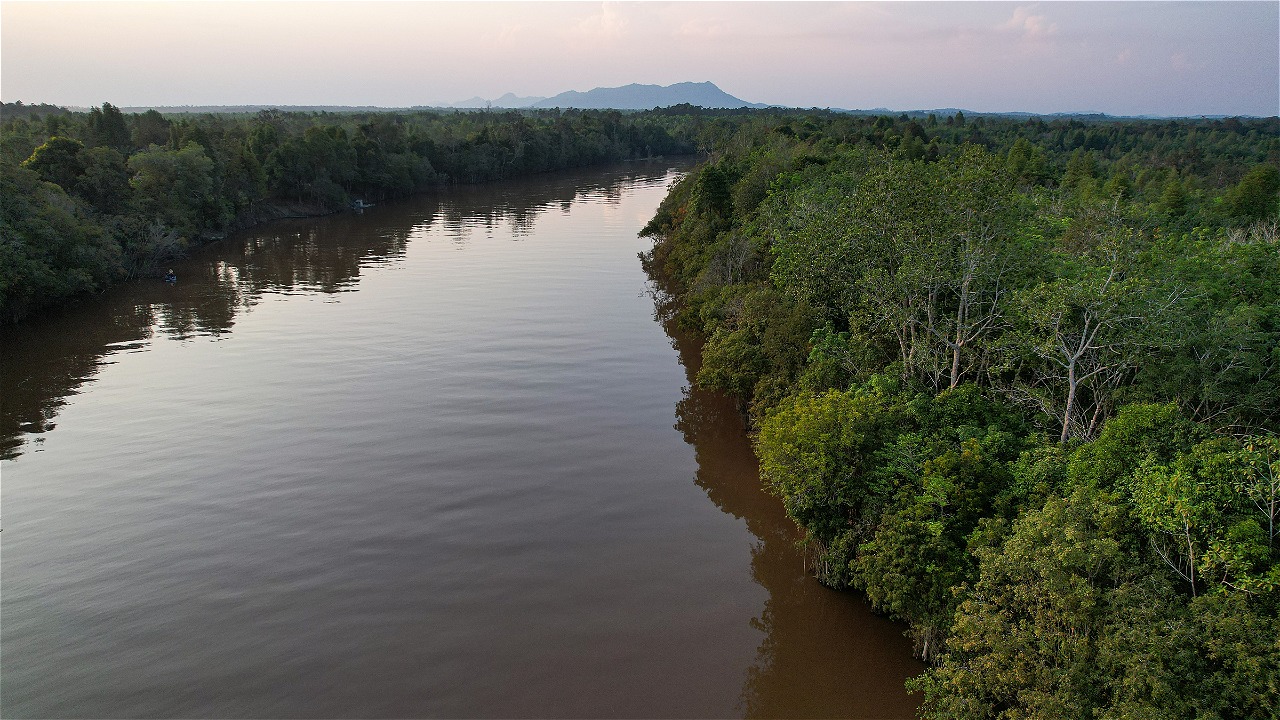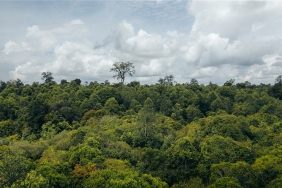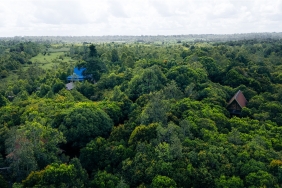RTRW SINTANG DISTRICT (2015 - 2035) HANDED OVER TO REGENT
by: Lia Syafitri
SINTANG (16/3) - The completed Regional Spatial Plan (RTRW) of Sintang Regency was handed over to the Regent last Friday (13/3), at the Sintang Regent's office. The document handover was carried out between WWF-Indonesia and the Sintang District Government.
After going through a fairly long process of preparing and improving the Sintang District RTRW - starting from the signing of the MoU for Cooperation in Preparing the Sintang District RTRW Document between the Sintang District Government and WWF-Indonesia in September 2014 to the Public Consultation on the results of the RTRWK improvement at the end of last January (29/1) - finally, it arrived at the final stage, namely the handover of the RTRWK document to the Sintang District Government.
The spatial planning of Sintang Regency aims to realize a safe, comfortable, productive and quality Sintang Regency space towards an independent, democratic and prosperous district - based on agriculture, plantations and tourism as the main driver of regional economic development - which is supported by a competitive and sustainable settlement system and resource management, as well as the development of the state border area as the front porch. The spatial plan document prepared is expected to be a reference in controlling and utilizing space in Sintang Regency for a period of 20 years (2015 - 2035).
"The Sintang Regency Government through the Technical Team in collaboration with WWF-Indonesia produced three documents in the form of the Draft Regional Regulation (Raperda) RTRWK, Academic Script and Technical Material equipped with a Map Album. As a follow-up, we put this draft into the Sintang Regional Legislation Program (Prolegda) to be discussed immediately, so that we can make it a reference for development in Sintang Regency," explained the Head of Bappeda Sintang Regency, Florentinus Anum.
"In the preparation of the RTRWK document, Sintang Regency itself has planned the establishment of 3 District Strategic Areas (KSK) in the form of areas that have strategic value in terms of economic interests, with the development of agricultural, plantation and agropolitan areas; areas that have strategic value in terms of environmental and forestry interests by functioning the Muller Ecosystem as the main buffer; and areas that have strategic value from the point of view of tourism interests that utilize the potential of tourism that has been built and the development of environmental services such as the Klutap area (Bukit Kelam, Bukit Luit, and Bukit Rentap) and Bukit Baka Bikt Raya National Park (TNBBBR), "he added.
On the same occasion, the Regent of Sintang, Milton Crosby, said that in spatial-based regional development, the planning places the spatial dimension as the basis in the preparation of development plans for each field of development.
"The preparation of development plans for these fields in the spatial dimension is carried out by taking into account the current conditions, which are reflected in the profile of regional conditions as well as the conditions of facts and potentials owned by the region as a spatial unit, including the problems faced. I am grateful for this multi-party cooperation and the Sintang District RTRW will be followed up as soon as possible to be discussed at the DPRD and ratified this year as well," said Milton.
The Head of the Public Works Agency, Murjani, said that infrastructure as an economic and social support is needed, infrastructure development cannot be separated from the influence of population distribution, as well as the area and geographical conditions of an area.
"Spatial planning can answer the challenges of infrastructure development with diverse geographical conditions and characters. Through the spatial planning approach, development - including infrastructure development - is expected to be able to harmonize infrastructure as a whole, thereby reducing regional disparities by taking into account the carrying capacity of the environment, "said Murjani.
The spatial arrangement of the district area is contained in the form of a Regional Regulation (Perda) on the district-level RTRW, where the function of the RTRW is as a reference in the preparation of the Regional Long-Term Development Plan (RPJPD) and the Regional Medium-Term Development Plan (RPJMD).
West Kalimantan Program Manager, WWF-Indonesia, Albertus Tjiu expressed his gratitude for the completion of the RTRW of Sintang District 2015 - 2035 through multi-stakeholder cooperation.
"We feel fortunate to be involved in the process of preparing and improving the Sintang RTRW document. The Sintang RTRWK is certainly expected to strengthen conservation programs that are reflected through good environmental management and be able to improve the standard of living and the economy of the community, which has been running well in Sintang Regency," he said.
The Sintang District RTRW was prepared by taking into account the dynamics of developing development such as the challenges of globalization, community aspirations, the balance of regional / sub-district development in the district area, the ecological and physical conditions of areas vulnerable to floods and forest fires, the impact of global warming, the development of plantation and tourism potential, the use of urban space, and the role of technology in utilizing space.
"Spatial planning has an important role in the implementation of development for the realization of sustainable development, the RTRW is an integrated concept between sectors that are interrelated in the use and control of space, which can support the achievement of efficiency in the use of natural resources and human resources, thus making a real contribution to the development of the district area in a sustainable and equitable manner to achieve the welfare of the people in Sintang Regency," added Albert.
For more information, please contact:
Amri Yahya | Spatial Planning Senior Officer, WWF-Indonesia West Kalimantan Program
Jl. Karna Sosial Gg. Wonoyoso II No. 3 | Tel. (0561) 734049 / HP. 08156544627 | Email: amriyahya@wwf.or.id





